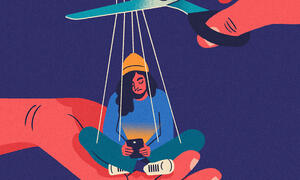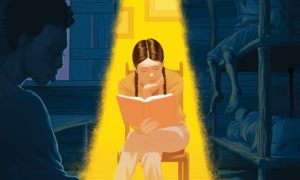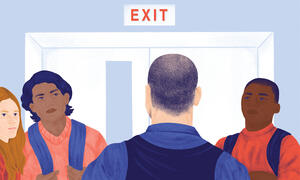author
Joi Miner
Joi Miner has been writing for as long as she can remember, but began her career as a spoken word artist. After making it to the finals in the Turner South “My South Speaks” competition, she appeared in a commercial and won slams at the Alabama Shakespeare Festival and the Green Mill in Chicago. Miner has four poetry collections under her belt: Graffitied Gypsy (2003), Fun House Mirrors (2005), Socioanthropologicfeminisms (2010) and Outrun The Night (2012). (Hear her read “ The Day I Swam Into a New World,” Teaching Tolerance’s first-ever audio Story Corner.)A domestic violence and sexual


